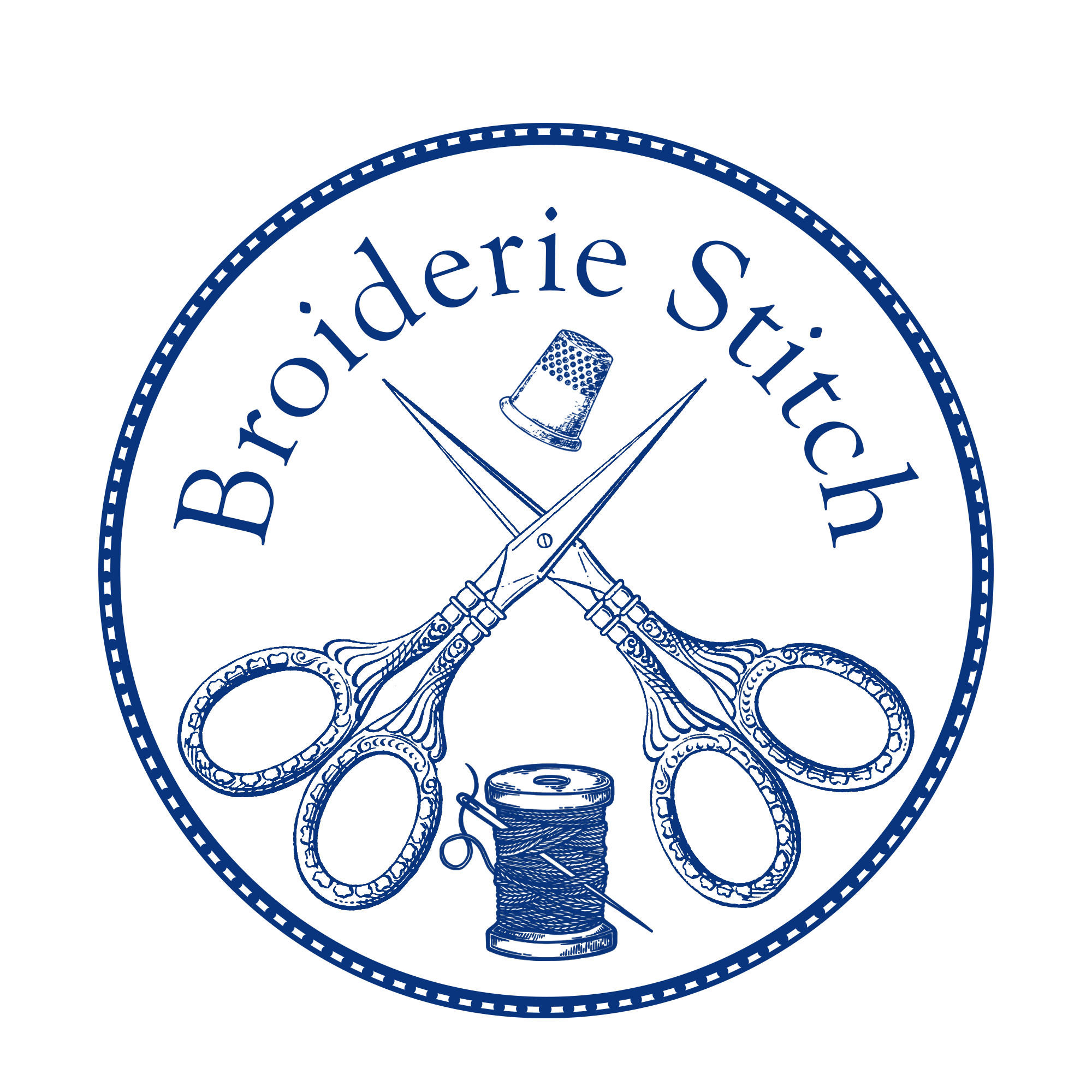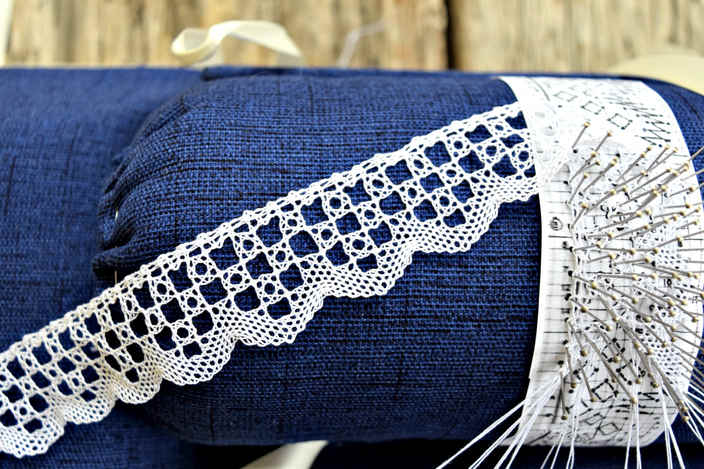
Making lace is nothing more or less than twisting strands together, but this simple definition seems inadequate for some of the great lacemaking traditions. Lace grew out of passementerie - the art of plaiting cords or ribbons, the best of gold or silver metal threads - in the 1400's. Switching to fine white linen thread and the obsession with ever finer patterns led to fantastical results by the 1600-1700's.
There are two rough groups of 'true' handmade lace; bobbin (or bone) laces, which are formed using the aid of dozens or hundreds of tiny bobbins, and needle laces, which are formed using nothing more than a needle to guide the shape of the lace. These definitions are a bit fuzzy, though; certain laces like filet laces are hand-darned onto machine-made net, and antique Brussels lace was made of needle lace inserts carefully attached to a background of handmade bobbin lace.
Here in the shop, we produce bobbin lace in a variety of styles. The narrow tape- or ribbon- laces are made by following a pattern wrapped around a bolster so that pieces of any size can be made. The pillows that accommodate this style look rather like a little bed, and the most common antique models are called Princess pillows. They're not easy to find anymore, so we had to make our own lace pillows to work on. We've named them the Belle pillows in honor of the old Princesses.

Belgium (Flanders in particular) and Italy were two of the first producers of lace. No one will ever know just who made bobbin or needle lace first, but many historians agree that Belgium was an early center for both bobbin and needle lace, and Italy shows records of needle lace that go at least as far back. Even now, Burano lace (from an island off of Venice) is hailed as some of the finest needle lace in the world.
Europe went lace crazy by the 1500's, and it was no surprise. Noblemen bragged about how many acres of good vineyard they had to sell for a ruff, and lace was left alongside estates and jewels in wills and trousseaus. It was a perfect form of portable wealth and could be transferred to different pieces of clothing as they wore out. Except for the a dip because of the French Revolution, lace reigned supreme for nearly 400 years.
In 1802, census records show two of my whole-bunch-of-greats- grandmothers as lace makers in England. One was a lace cutter, which was a much more difficult job - she had to cut motifs out of the other girls' laces, and repair the tiny threads when necessary. It was a bit like being a bomb specialist, but with emotional instead of physical blowout in case things went wrong.
In 1840, Good Queen Victoria shocked the world by wearing what eventually become a classic - a pure white wedding gown. It was covered in handmade Honiton lace and was a huge boon to England's lacemakers. Everyone had to get married in one. Godey's Lady's Book, published some 10 years after, erroneously states that white had been the traditional color for hundreds of years because of how hard this trend swept the world. Royals had been married in white before, but no one did it better than the Queen. She later used her bridal lace on many other occasions, and used pieces for the royal family.

It wasn't long after my ancestor's days when the high cost and incredible amount of working hours spurred interest in developing machine-made laces. It was the Industrial Revolution! Machines could conquer the world! Though the first decent Leavers machine was patented around 1814, it didn't find its final form until the 1840's. With over 40,000 moving parts and dozens of steps to completion, machine made lace didn't really gain a secure foothold until the Great Depression brought luxuries to a crashing halt.
Desperate to make ends meet, without the money for clothing, food, or other necessaries, most lacemaking came to a grinding halt. But Nature abhors a vacuum, and determined girls found a way to get a semblance of that ethereal design onto the most homely of materials - gingham.

Called snowflaking, Depression lace, or chickenscratch, this homely form of embroidery stepped up as a way to make something out of nearly nothing. It might be a far cry from a queen's bridal gown, but it brightened up the cheapest of materials and lent itself to many cute designs.

Modern lacemaking has neither the vicissitudes of courtly life nor the hardscrabble bleakness of a depression to deal with - and with some fairly fine machine-made laces for cheap, it is almost a harder struggle. But with lacemaking, as well as with most things, there is no substitute for quality.

We're proud to offer handmade lace, to teach those willing to learn, and keep this beautiful art alive. Though it took me over 20 years to learn the basics, I'm happy to report that my students have picked up the craft in a fraction of the time. We hope to offer many more designs in the shop for years to come.


11 comments
Hi Sarah! Your best bet for instruction is probably a lacemaker’s association or guild – there are hobbyist groups around the world, and some of them put on events. We don’t offer any lace patterns (not yet anyway), but there are books and patterns available, often sorted by the particular style of lace they cover. Good luck! It can be a rewarding hobby.
Hi
Thanks for your article giving the history of lace making. I have always been intrigued by lace and would love to do it as a hobby. I am totally blind, so do you know where i could get patterns and instructions for me to start learning.
Kind regards sarah
Thanks Jennifer! I’ll have to check it out.
The claiming of the Shrew b y Shana Galen about lace makers of Portugal
Hi Gryphon,
I’m so glad you’re interested in making lace! It is interesting and can be infinitely complex – but there are very, very few people who support themselves by making lace. Although we love to do it here in the studio, it is very rare that we receive an order for it. Unfortunately few people are willing to pay a livable wage for the hours of work involved. The few that I know of seem to make their living either teaching it or designing patterns more than from selling the finished pieces themselves. This is one hobby that it may be better to do for fun (at least at first) so that you can feel out your niche before committing your livelihood to it.
Best of luck!
Jackie